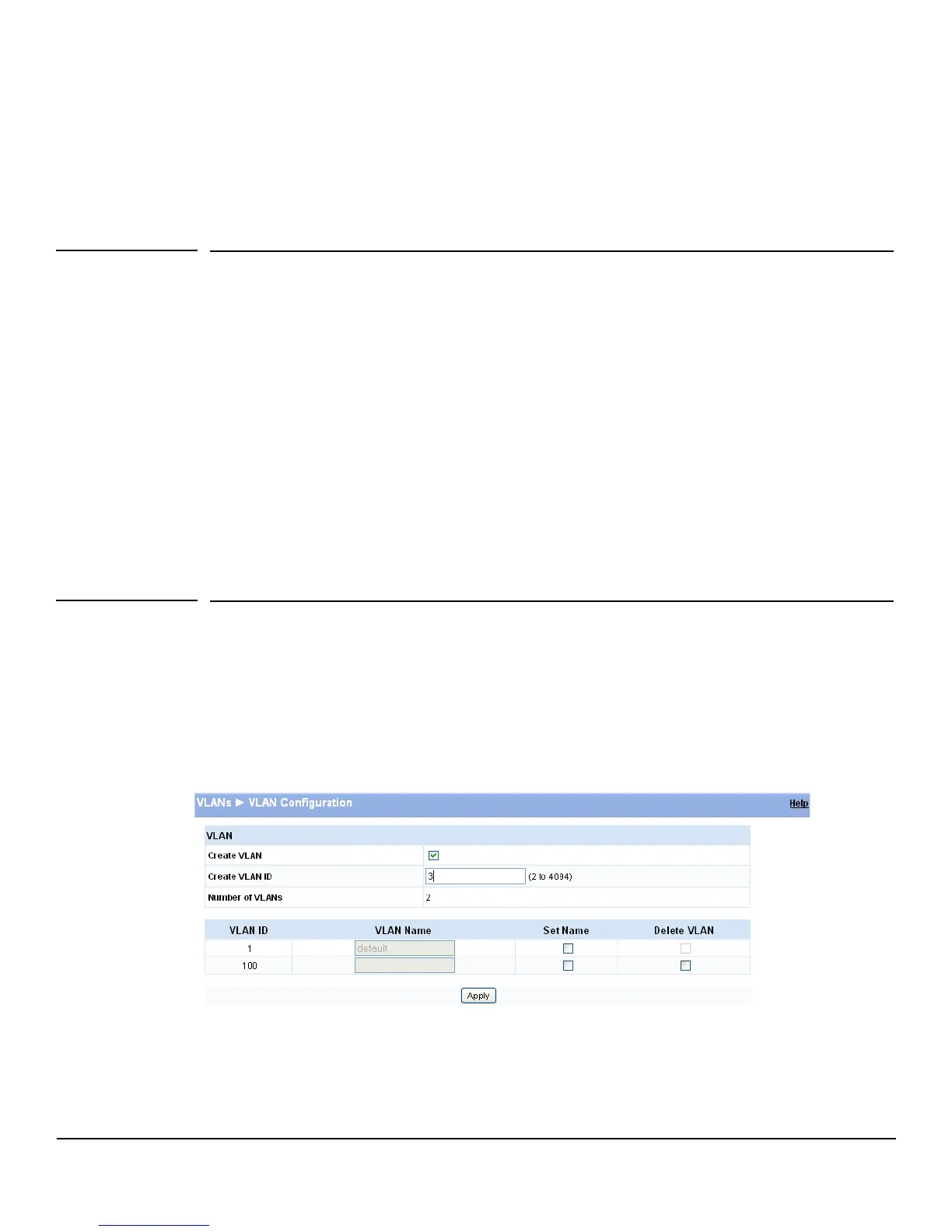7-1
Virtual LAN
VLAN Configuration
7
Virtual LAN
On a Layer 2 switch, Virtual LAN (VLAN) support offers some of the benefits of both bridging and
routing. Like a bridge, a VLAN switch forwards traffic based on the Layer 2 header, which is fast, and
like a router, it partitions the network into logical segments, which provides better administration,
security and management of multicast traffic.
A VLAN is a set of end stations and the switch ports that connect them. Many reasons exist for the
logical division, such as department or project membership. The only physical requirement is that the
end station and the port to which it is connected both belong to the same VLAN.
Each VLAN in a network has an associated VLAN ID, which displays in the IEEE 802.1Q tag in the
Layer 2 header of packets transmitted on a VLAN. An end station may omit the tag, or the VLAN portion
of the tag, in which case the first switch port to receive the packet may either reject it or insert a tag
using its default VLAN ID. A given port may handle traffic for more than one VLAN, but it can only
support one default VLAN ID.
HP PS1810 series switches support up to 64 VLANs.
VLAN Configuration
Use the VLAN Configuration page to define VLAN groups. VLAN 1 is the default VLAN of which all
ports are members. You can create up to 64 VLANs.
To display the VLAN Configuration page, click VLANs > VLAN Configuration in the navigation pane.
Figure 7-1. VLAN Configuration Page
